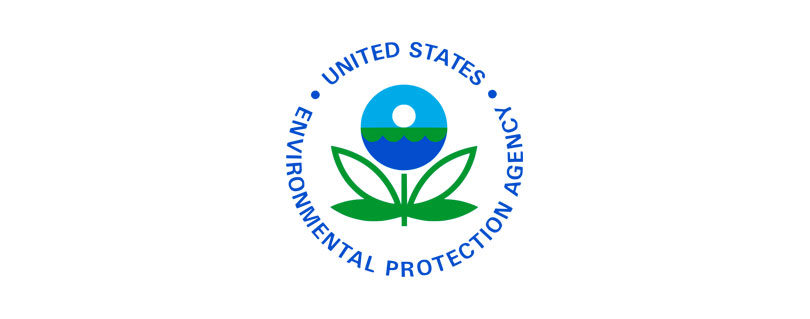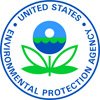Biden-Harris Administration Announces $1,365,297 for Three Community Air Pollution Monitoring Projects in North Carolina
Publilshed by the U.S. Environmental Protection Agency (EPA)
RALEIGH, NC (November 3, 2022)- Today, the U.S. Environmental Protection Agency (EPA) has selected Blue Ridge Environmental Defense League, Clean Air Carolina and the Research Triangle Institute and to receive funding to conduct community air quality monitoring in several underserved communities. The grants are three of the 132 air monitoring projects in 37 states will receive $53.4 million from President Biden’s Inflation Reduction Act and American Rescue Plan to enhance air quality monitoring in communities across the United States. The projects are focused on communities that are underserved, historically marginalized, and overburdened by pollution, supporting President Biden’s Justice40 Initiative.
“I’m glad to see federal funding from both the American Rescue Plan and the Inflation Reduction Act supporting air monitoring projects in the Sixth District and across the state to ensure clean air for North Carolinians,” said Congresswoman Kathy Manning. “Clean air is a necessity, and I’m grateful for the Environmental Protection Agency and the Forsyth County Office of Environmental Assistance and Protection for their efforts to implement programs that put the health and safety of our communities at the forefront.”
“Through the American Rescue Plan and the Inflation Reduction Act, the Biden Administration is taking significant strides to rectify long-standing health and environmental inequities in our communities,” said Congressman David Price. “Through these transformative investments in air quality monitoring, historically underserved communities in North Carolina will have clean air for current and future generations.”
“This grant is welcome news and will help improve air quality for children, particularly in underserved communities, across North Carolina,” said Congresswoman Deborah Ross. “I fought to pass the Inflation Reduction Act and the American Rescue Plan to invest in our future and protect the environment for the next generation. Clean air should be a right for everyone – regardless of their zip code – and I’m pleased to see these funds coming to our state to protect public health and safety for years to come.”
“These grants will give communities in the Southeast the tools they need to better understand air quality challenges in their neighborhoods,” said EPA Region 4 Administrator Daniel Blackman. “EPA’s investment in ARP funding will not only advance the agency’s mobile air monitoring labs and air sensor loan programs but improve the agency’s ability to support communities in need of short-term monitoring and air quality information.”
Blue Ridge Environmental Defense League – $365,368.00
With funding from EPA, BREDL will purchase very high-quality air monitoring equipment from The J. J. Wilbur Co./Wilbur Technical Services, Raleigh, N.C. (“Wilbur”). This equipment will be mounted securely on a covered trailer (“mobile unit”) and driven to and parked at strategic locations in the southeastern U.S. where BREDL chapter organizations have confirmed a need for air pollution monitoring and the commitment to provide a safe, secure location to park the trailer and conduct air monitoring. Air monitoring data as generated by this project will be used by BREDL chapters and staff in our ongoing environmental protection campaigns.
Clean Air Carolina – $500,000.00
CleanAIRE NC, in partnership with Environmental Justice Community Action Network, will establish an air monitoring network in Sampson County to address long-standing health inequities and environmental justice implications caused by cumulative air pollution impacts from non-traditional sources. We will measure particulate matter less than or equal to 2.5 microns in aerodynamic diameter (PM2.5), volatile organic compounds (VOCs), speciated VOCs, and hydrogen sulfide (H2S) emitted from swine and poultry concentrated animal feeding operations (CAFOs), Sampson County Landfill, and Enviva Sampson wood pellet facility. Twenty community members, known as AirKeepers, will host PurpleAir sensors (low-cost sensors that report PM2.5) and engage in data collection via study design and implementation. CleanAIRE NC will work with partner organizations and AirKeepers to implement clean air education, technology and advocacy training to facilitate understanding of the data, increasing agency and empowerment.
Research Triangle Institute – $499,929.00
We propose to (1) monitor particulate matter (PM2.5), ozone (O3) , and their precursors (NOx, NO2, and SO2) at 20 childcare facilities in underserved areas of central NC by collecting real-time, continuous PM2.5 data and time-weighted averages of O3, NOx, NO2, and SO2; (2) provide trainings on equipment use, data interpretation, and recommendations; and (3) donate active air quality monitors to enrolled facilities for continued use after the project ends. Study findings will be shared with childcare facilities and families in an easy-to-understand format, coupled with simple actions they can take to reduce children’s exposure and risk from PM2.5 and O3 and their precursor gases. Our short-term goal is to improve understanding of spatial and temporal distribution of air pollution associated with adverse health outcomes in underserved childcare settings, and our long-term goal is to build a network of informed childcare facilities and childcare advocates stewarding and monitoring their air quality to protect children’s health.
The air pollution monitoring projects are made possible by more than $30 million in Inflation Reduction Act funds, which supplemented $20 million from the American Rescue Plan and enabled EPA to support 77 additional projects, more than twice the number of projects initially proposed by community-based nonprofit organizations, state and local governments, and Tribal governments.
These grant selections further the goals of President Biden’s Justice40 Initiative and Executive Order, Tackling the Climate Crisis at Home and Abroad, which directed that 40 percent of the overall benefits of certain Federal investments flow to overburdened communities that face disproportionately high and adverse health and environmental impacts. By enhancing air monitoring and encouraging partnerships with communities, EPA is investing in efforts to better protect people’s health, particularly those in underserved communities.
EPA will start the process to award the funding by the end of 2022, once the grant applicants have met all legal and administrative requirements. Grantees will have three years to spend the funds from the time EPA awards the grants.
See the full list of applications selected for award.
Background
In spring 2021, Congress passed the American Rescue Plan, providing EPA with a one-time supplemental appropriation of $100 million to address health outcome disparities from pollution and the COVID-19 pandemic. Half of that $100 million, was dedicated to air quality monitoring. EPA Regions began awarding nearly $22.5 million from this appropriation in 2022 as direct awards to state, tribal, and local air agencies for continuous monitoring of fine particle and other common pollutants. In addition, EPA Regions are in the process of procuring monitoring equipment using $5 million in American Rescue Plan funding to advance the EPA Regional Offices’ mobile air monitoring capacity and establish air sensor loan programs. . These investments will improve EPA’s ability to support communities that need short-term monitoring and air quality information.
In July 2021, EPA announced the $20 million American Rescue Plan Enhanced Air Quality Monitoring for Communities Grant Competition. The goal of this competition was to improve air quality monitoring in and near underserved communities across the United States, support community efforts to monitor their own air quality, and promote air quality monitoring partnerships between communities and tribal, state, and local governments. EPA received more than 200 applications in response to the competition.
The Inflation Reduction Act of 2022 provides funding to EPA to deploy, integrate, support, and maintain fenceline air monitoring, screening air monitoring, national air toxics trend stations, and other air toxics and community monitoring. Specifically, the Inflation Reduction Act provides funding for grants and other activities under section 103 and section 105 of the Clean Air Act. EPA is using approximately $32.3 million of this funding to select 77 high-scoring community monitoring applications.
Read the full article at: https://www.epa.gov/newsreleases/biden-harris-administration-announces-1365297-three-community-air-pollution-monitoring



